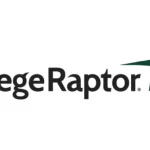In today’s fast-paced world, the integration of Artificial Intelligence (AI) has become increasingly widespread across almost all industries. However, AI’s potential in higher education is especially promising and is growing minute by minute. But what approach to AI works best for institutions of higher education looking to enhance their student communications strategy? Generative AI like ChatGPT? Human-Centered Artificial Intelligence? Or a combination of the two? Let’s dive in!
What Is Human-Centered Artificial Intelligence (HCAI)?
Human-Centered Artificial Intelligence (HCAI) is an approach to artificial intelligence that focuses on augmenting human intelligence and capabilities, rather than replacing them. HCAI recognizes the complementary relationship between humans and technology. It underlines the importance of designing AI systems with people in mind, making them accessible, adaptable, and respectful of human values, needs, and diversity. HCAI represents a paradigm shift in the way we approach technology, empowering humans to actively collaborate with intelligent systems.
The History of Human-Centered Artificial Intelligence
The history of human-centered AI can be traced back to the early days of AI research. In 1956, at the Dartmouth Conference, John McCarthy coined the term “artificial intelligence,” which marked the beginning of AI as a field. However, it wasn’t until later that the concept of human-centered AI started to gain more attention.
Over the years, advancements in AI technology and an increased understanding of its potential impact have led to the emergence of human-centered AI as a distinct area of research. Scholars and researchers have recognized the importance of designing AI systems that align with human needs, values, and capabilities. This approach aims to prioritize ethical considerations, such as fairness, transparency, and accountability, in the development and deployment of AI systems.
Today, institutions like the Stanford Institute for Human-Centered Artificial Intelligence (HAI) are dedicated to studying, guiding, and developing human-centered AI technologies and applications. HCAI aims to advance AI research, education, policy, and practice to improve the human condition
What Is Generative Artificial Intelligence?
Generative AI, also known as generative artificial intelligence, refers to a type of artificial intelligence technology that can generate various types of content such as text, images, music, code, or other media. It uses machine learning systems and generative models to learn the patterns and structures from input training data and then generate new data that shares similar characteristics.
Generative AI has applications in various domains, including text generation, image synthesis, music composition, and even video production. It can learn from existing artifacts and create new, realistic content that reflects the characteristics of the training data but is not a replication of it. By leveraging neural networks and different learning approaches like unsupervised or semi-supervised learning, generative AI models can identify patterns within existing data and generate original content.
The benefits of generative AI are vast. It enables automated content creation, providing tools for creativity and innovation. It can assist artists, designers, and developers by generating new ideas, designs, or prototypes. In addition, Generative AI has the potential to enhance various industries, including entertainment, marketing, and education, by providing personalized and customized experiences.
However, it is important to be aware of the potential risks and ethical implications associated with Generative AI. The generated content can sometimes be misleading, biased, or inappropriate. Furthermore, there are concerns about intellectual property rights and the potential misuse of generative AI in creating misleading or malicious content.
Generative AI is an evolving field with ongoing research and development, and its applications continue to expand. It holds promise for advancing creativity, innovation, and automation in various industries.
How Is Human-Centered Artificial Intelligence Different from Generative Artificial Intelligence?
Human-Centered AI (HCAI) is distinct from Generative AI (GAI) in several ways. HCAI places an emphasis on personalized and context-aware user interactions, aiming to understand individual needs, goals, and preferences. It focuses on collaboration between humans and AI, augmenting human capabilities and enhancing user experiences. On the other hand, GAI is primarily concerned with generating new content based on learned patterns and lacks the same level of personalization and context-awareness as HCAI. Additionally, as mentioned in our definition of generative artificial intelligence, GAI content can tend to be biased, whereas human-centered artificial intelligence takes into consideration human values, needs, and diversity.
Why Higher Education Should Use a Combination of HCAI and GAI
Both HCAI and GAI are powerful AI Models. However, when they work in harmony, the result is a compelling, efficient solution for higher education institutions. This is why Ocelot’s Student Communications Platform leverages a unique combination of both human-centered and generative artificial in. Why use HCAI and GAI together? The answer lies in the unique strengths each offers.
HCAI prioritizes human values, needs, and input, making it superb for tailoring student experiences and promoting active human-AI collaboration. For example, users can manually edit or improve AI-generated content to suit their nuanced, unique requirements. Ocelot ensures this human-curated content remains protected for future student interactions, highlighting respect for human judgment in our AI-powered communications platform and the AI-powered Chatbot, Live Chat, and Two-Way Texting solutions.
Meanwhile, GAI opens the door to new content and ideas, making it an excellent tool for tackling novel situations and ever-expanding data. An illustration of GAI in action at Ocelot is how previously unseen questions result in new knowledge base entries, harnessing AI’s ability to learn and adapt – our FAFSA Simplification Digital Assistant is a great example of this.
The result of leveraging both approaches where appropriate is a balanced symbiosis of AI and the human mind – fostering a future where higher education continually evolves and improves. When institutions harness both HCAI and GAI, they’re not just adopting AI—they’re setting up a powerful partnership for unprecedented possibilities in supporting students and staff.
Four Ways Human-Centered Artificial Intelligence Combined With Generative AI Can Enhance Higher Education
1. Augmenting Human Intelligence
The unique combination of HCAI and GAI leverages AI capabilities to augment human intelligence, automate repetitive tasks, and provide personalized support. Rather than being passive recipients of AI decisions, individuals become active collaborators with intelligent systems. HCAI acts as an extra set of hands, enabling education professionals to focus on more complex and meaningful work.
2. Personalization and Context-Awareness
One of the key advantages of the unique combination of GAI and HCAI in higher education is its ability to provide personalization and context-awareness. These systems engage in meaningful dialogues with users, seeking to understand their specific needs, goals, and preferences. This level of interaction makes the human-user an active participant, with AI serving as a supporting tool to enhance their abilities and aid decision-making processes. It’s like having a knowledgeable partner who truly understands your unique needs and assists you in achieving your goals.
3. Improving Student Experiences
AI-powered solutions in higher education have the potential to greatly enhance student experiences. Through personalized support, adaptive learning platforms, and intelligent tutoring systems, students can access tailored educational content and receive targeted guidance. This personalized approach not only boosts student engagement but also increases retention rates.
4. Enhancing Staff Efficiency
The combination of HCAI and GAI not only benefits students but also supports staff efforts. By automating repetitive administrative tasks, AI-powered systems free up valuable time for educators and administrators, allowing them to focus on more strategic and high-impact activities. For example, AI chatbots can handle routine queries, providing instant responses and relieving staff members of time-consuming tasks. This increased efficiency translates to a more productive and satisfying work environment for education professionals.
The Future of AI in Higher Education
As higher education institutions continue to embrace AI-powered solutions, the potential for continuous improvement and collaboration between technology and human expertise paves the way for a brighter and more efficient future in education. That’s why Ocelot leverages a combination of both human-centered artificial intelligence and generative artificial intelligence in order to give institutions the best of both worlds. With Ocelot’s AI-powered student communications tools, you gain the adaptability of GAI bolstered by HCAI’s human touch, keeping interactions authentic, relatable, and personalized.
Want to learn about how Ocelot combines the power of Generative Artificial Intelligence and Human-Centered Artificial Intelligence? Download our White Paper, “The Power of Human-Centered AI in Higher Education” here!















